
Introduction
Here on the bench today is the ASUS ROG STRIX GeForce RTX 3060 OC Edition 12GB GDDR6 video card (ROG-STRIX-RTX3060-O12G-GAMING.) For review purposes, (and our sanity) we will just refer to it as ASUS ROG STRIX RTX 3060 OC Edition in our text. Jut note that this does have 12GB of GDDR6 and is the OC Edition or as ASUS likes to call it “O12G.”
Being that this is an OC Edition STRIX model it’s naturally the cream of the crop within the ASUS GeForce RTX 3060 ecosystem. Pricing for this video card from the Newegg shuffle is a whopping $549.99. As we know, the GeForce RTX 3060 series was created without a Founders Edition offering from NVIDIA so the official MSRP of $329 is more a suggestion than previous releases. The hard truth is that manufacturers will be able to exert more control of the pricing for these video cards, and in this pandemic of pricing, it’s going to be exaggerated. Pricing is just going to be all over the place currently but hopefully will settle over time.
ASUS GeForce RTX 3060 Lineup
ASUS really came through with a load of options for interested buyers with 5 different models and some with accompanying OC variants. Every single base model shares the same clock speeds, at 1777 MHz with the Gaming BIOS and 1807 MHz when using the OC Mode BIOS. VRAM on all models is set to 1875 MHz/15 Gbps. The clock speed parity comes to a stop with the OC Edition counterparts. For the base models, the main differentiators come through in the aesthetics, cooling, quality of life features, and the quality of the components. The OC Editions are where you see speed differences arise. All of these cards are well above the reference specification NVIDIA set at 1780 MHz for boost clocks.
ASUS ROG STRIX GeForce RTX 3060 OC Edition
The ROG-STRIX-RTX3060-O12G-GAMING is based on NVIDIA’s GA106 silicon, featuring the Ampere architecture and manufactured on Samsung’s 8nm process. This is NVIDIA’s smallest entry utilizing the Ampere architecture, coming in at 276mm2 and packing 13,250 million transistors. Within that silicon we have 3584 CUDA cores, 112 Tensor Cores (3rd Gen), 28 RT Cores (Ray Tracing Cores 2nd Gen), 112 TMU’s, and 48 ROPs. This GPU is paired with 12GB of GDDR6 memory on a 192-bit bus running at 15 Gbps and it provides 360 GB/s of total memory bandwidth.
The TGP for this video card is 170W but as we have mentioned this model is overclocked and will consume more power than the NVIDIA reference specification. This ASUS ROG Strix GeForce RTX 3060 OC Edition 12GB GDDR6 model comes with core clock speeds rated for 1882 MHz boost clocks while in the Gaming Mode BIOS, and a blistering 1912 MHz boost clock while in OC Mode BIOS.
This ASUS model gives you a 7% increase over the reference edition boost clocks at 1780 MHz vs 1912 MHz, assuming you utilize the OC Mode BIOS although even the Gaming Mode BIOS gives you 5.5% faster boost clocks. It’s also a healthy increase over the non-OC Edition at 5.7% faster in the Gaming Mode BIOS and 5.6% faster when comparing OC Mode BIOS.
ASUS has managed to find a way to deliver that gamer aesthetic without looking gaudy and overbearing and simultaneously packing in some rather welcome features that we will discuss further in the next section. Dimensions on this Video Card come in at 11.81 inches in length (30cm), 5.26 inches (13.36cm) in width, and 2.11 inches (5.35cm) in height.
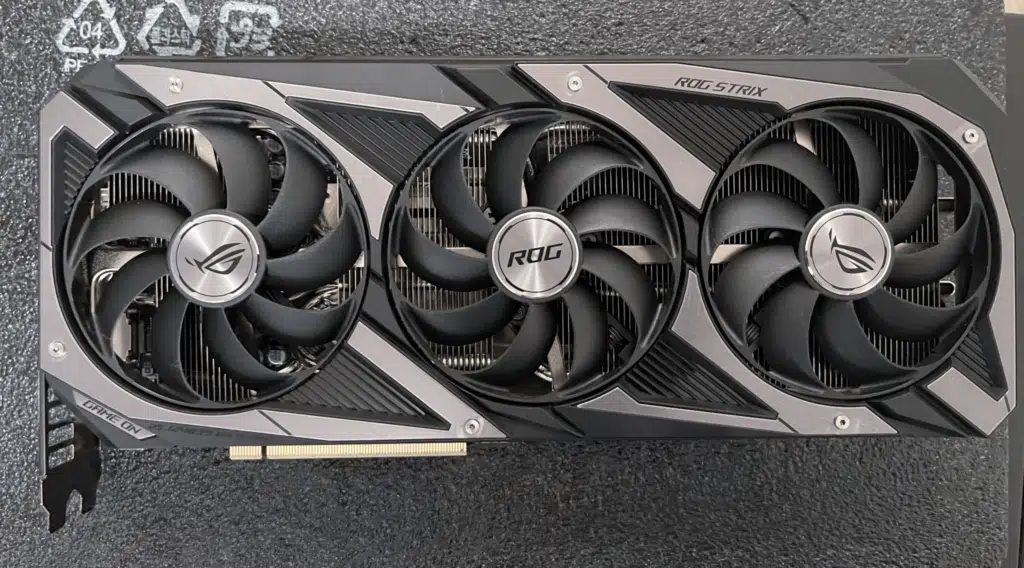
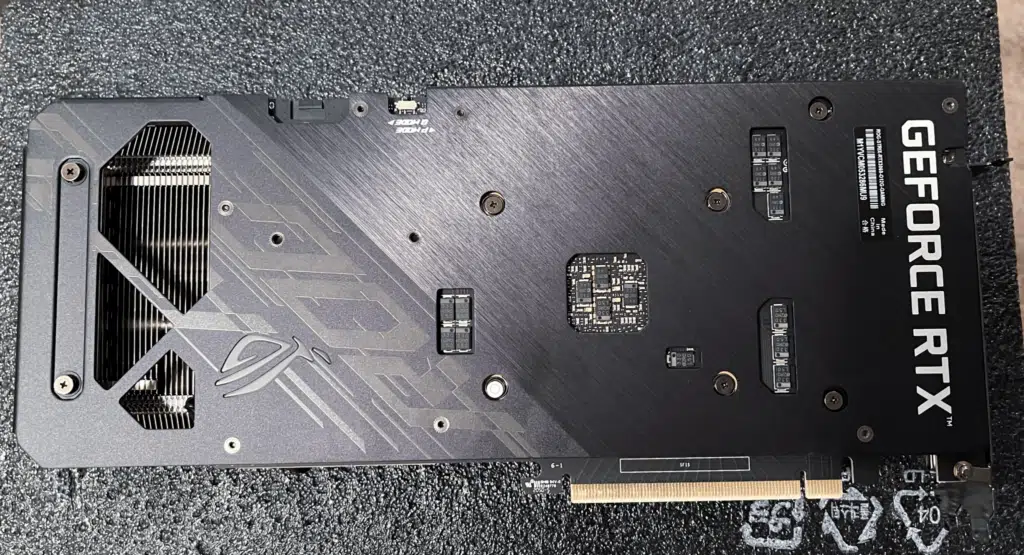
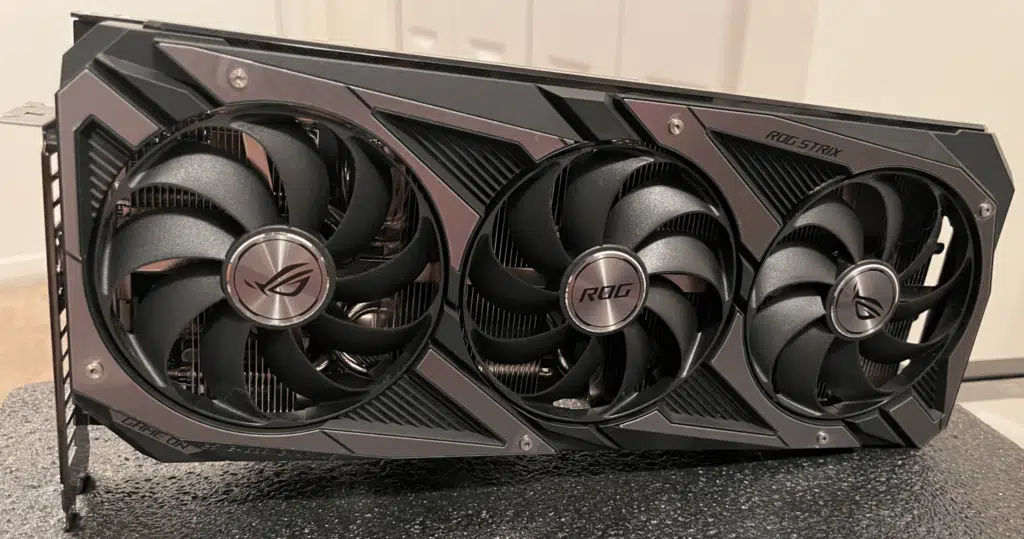
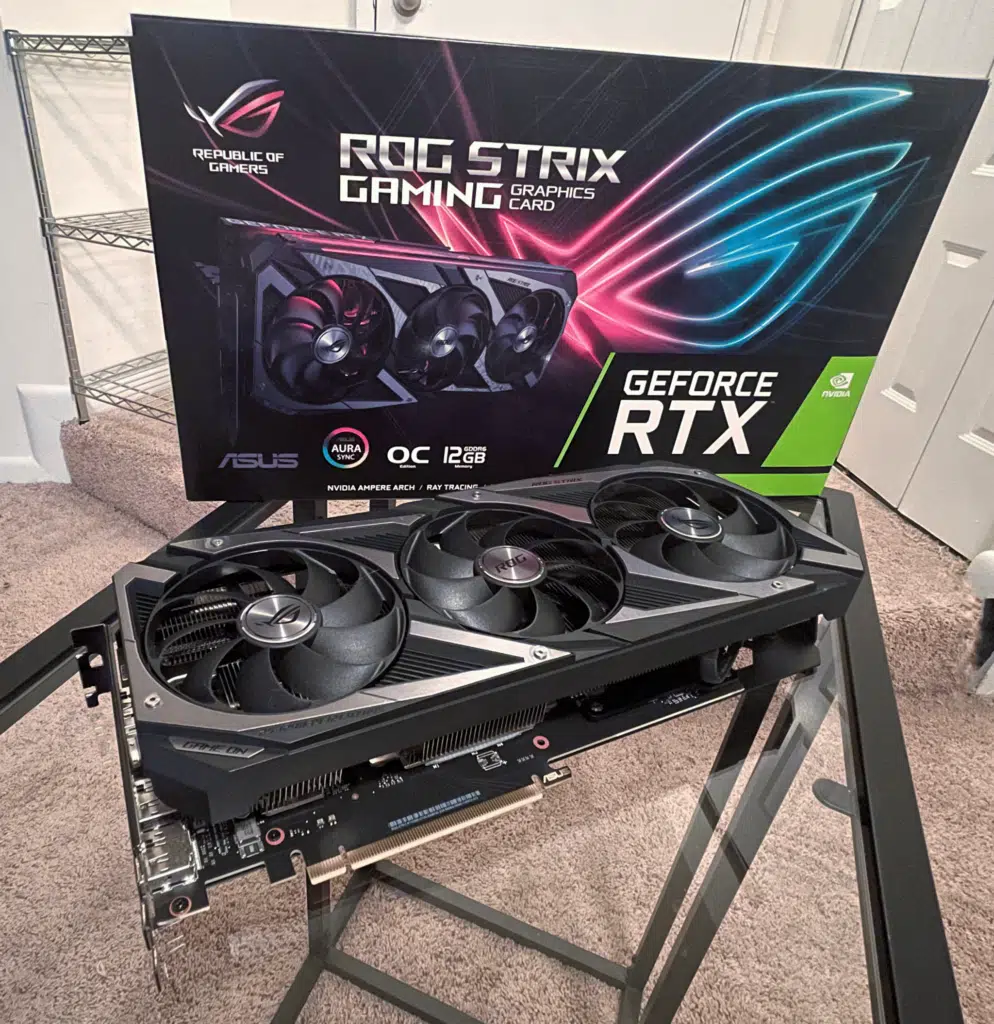

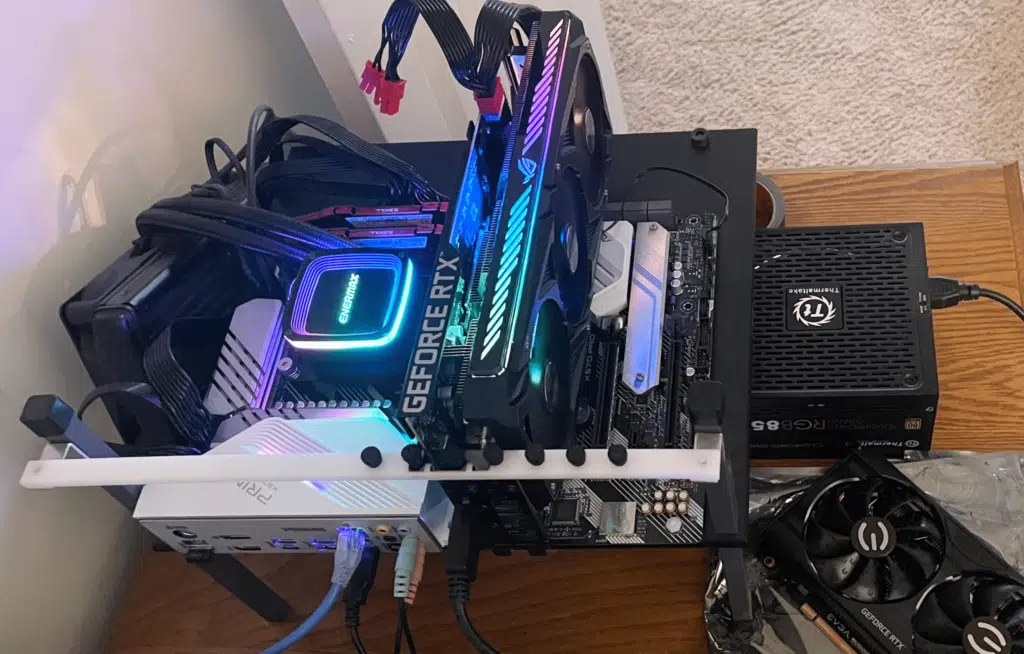
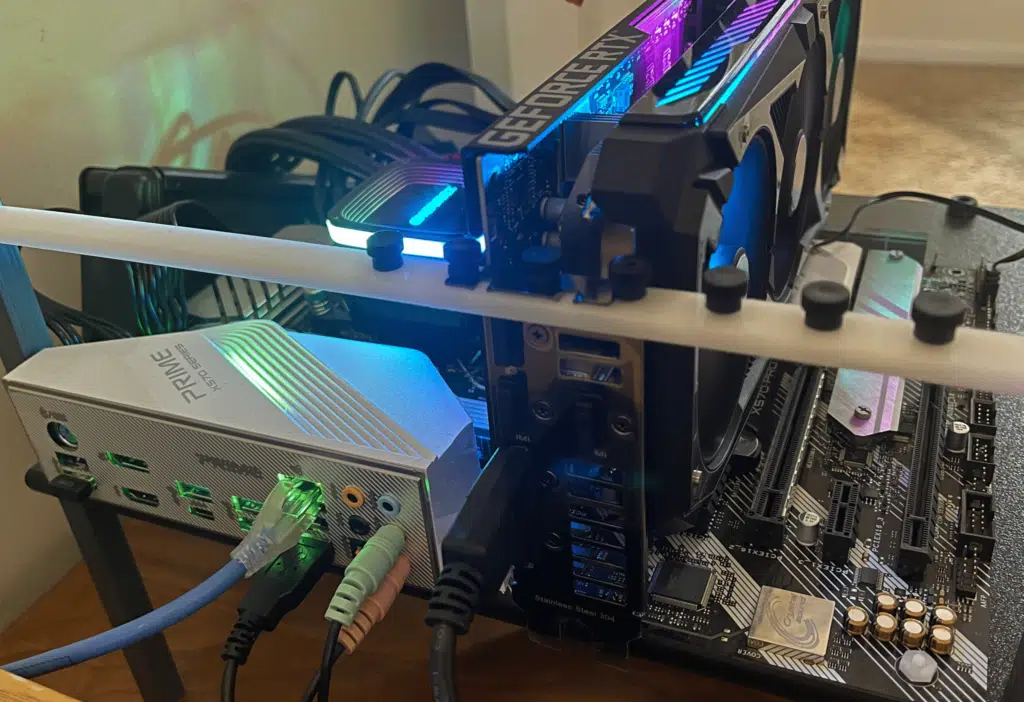

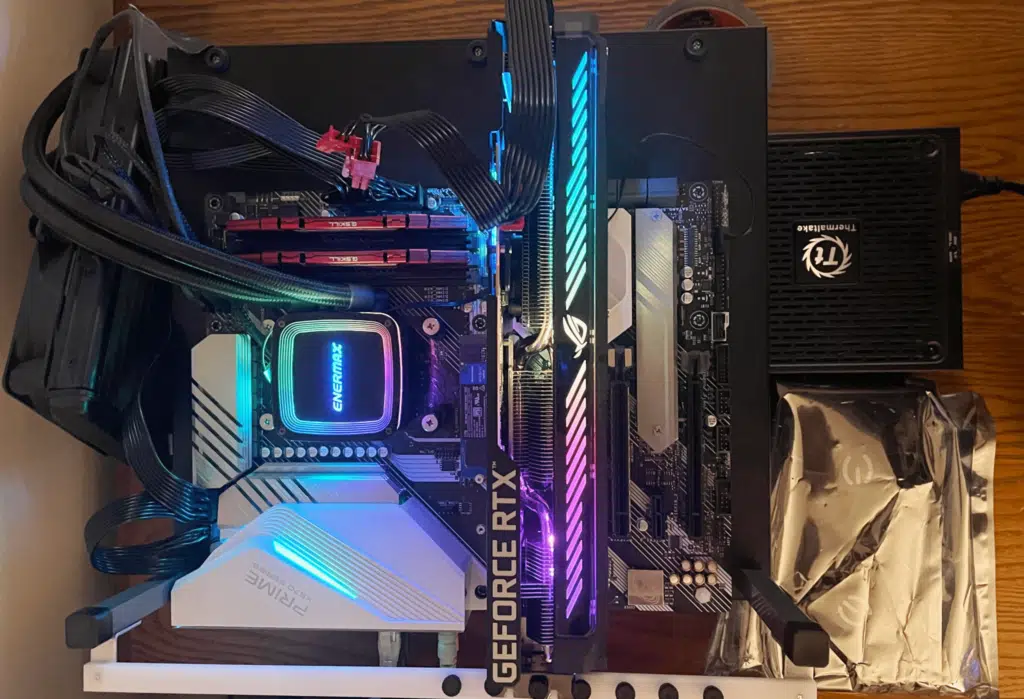
Features
The ROG-STRIX-RTX3060-O12G-GAMING is the premiere model in the ASUS GeForce RTX 3060 lineup. In ASUS’s own words they claim to use only the best components available when producing these cards.
Top-shelf capacitors, chokes, and MOSFETs are selected to effortlessly deliver hundreds of watts at a milliseconds notice. The Super Alloy Power II parts are soldered to the PCB using our advanced Auto-Extreme automated manufacturing process. Smooth joints are on the rear of the PCB and the elimination of human errors ensures each graphics card meets our rigorous specifications.
ASUS mentions it utilizes its Axial-Tech Fan design in a triple fan layout, with two fans spinning counterclockwise to reduce turbulence as well as noise. These fans are designed with a smaller hub in an effort to increase the size of each fan blade and utilizes a ring design to help channel more airflow into the fins. This is further enhanced by the PCB and back-plate cutout that limits the amount of hot air getting trapped within the shroud. In a further effort to combat noise, all fans will stop when the video card falls below 50 degrees Celsius.

We see the welcome re-occurrence of ASUS FANCONNECT II fan headers on the PCB allowing users to connect case fans directly to the video card for more dynamic or focused video card cooling.

Moving on we see the BIOS dip switch placed on the PCB with clear instructions on which mode is which. It’s always nice to have clarity with text indicating which position is which.
“PC builders looking for a quick and easy way to set the standard fan speed of their card can choose between the “Performance” and “Silent” profiles with an onboard dual BIOS switch – without additional software.”
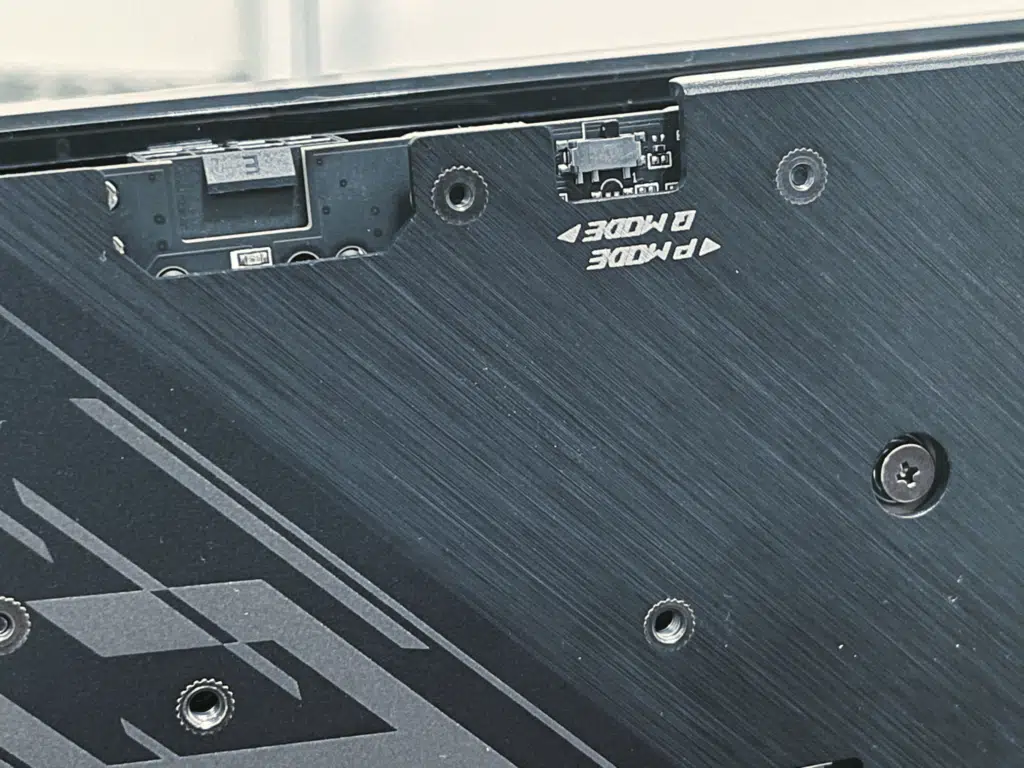
On the ASUS webpage for this product, they mention their MAXCONTACT technology which is a method to polish the surface of the heat spreader for increased flatness and in turn better thermal transfer with the GPU die and heatsink. ASUS also mentions that this is a 2.7 slot design.
“To get heat up off the die and into the heatsink array to benefit from the new fan design requires special attention. We use a manufacturing process that polishes the surface of the heat spreader to improve smoothness at the microscopic level. The extra flatness allows for better contact with the die for improved thermal transfer.”
With this ASUS model, you get a fairly interesting set of offers and software to toy around with. On the back of the box, we see a 6-month premium license to Wtfast, a 1-year premium license for XSplit, alongside a mention of the ASUS GPU Tweak III software that can help users get more out of their graphics card. ASUS also speaks briefly on the back of the box about QuantmCloud, an application that allows users to earn extra money by sharing GPU compute resources. NVIDIA staples such as NVIDIA REFLEX, GeForce Broadcast, GeForce RTX IO, and RTX Voice are all supported features as well.
